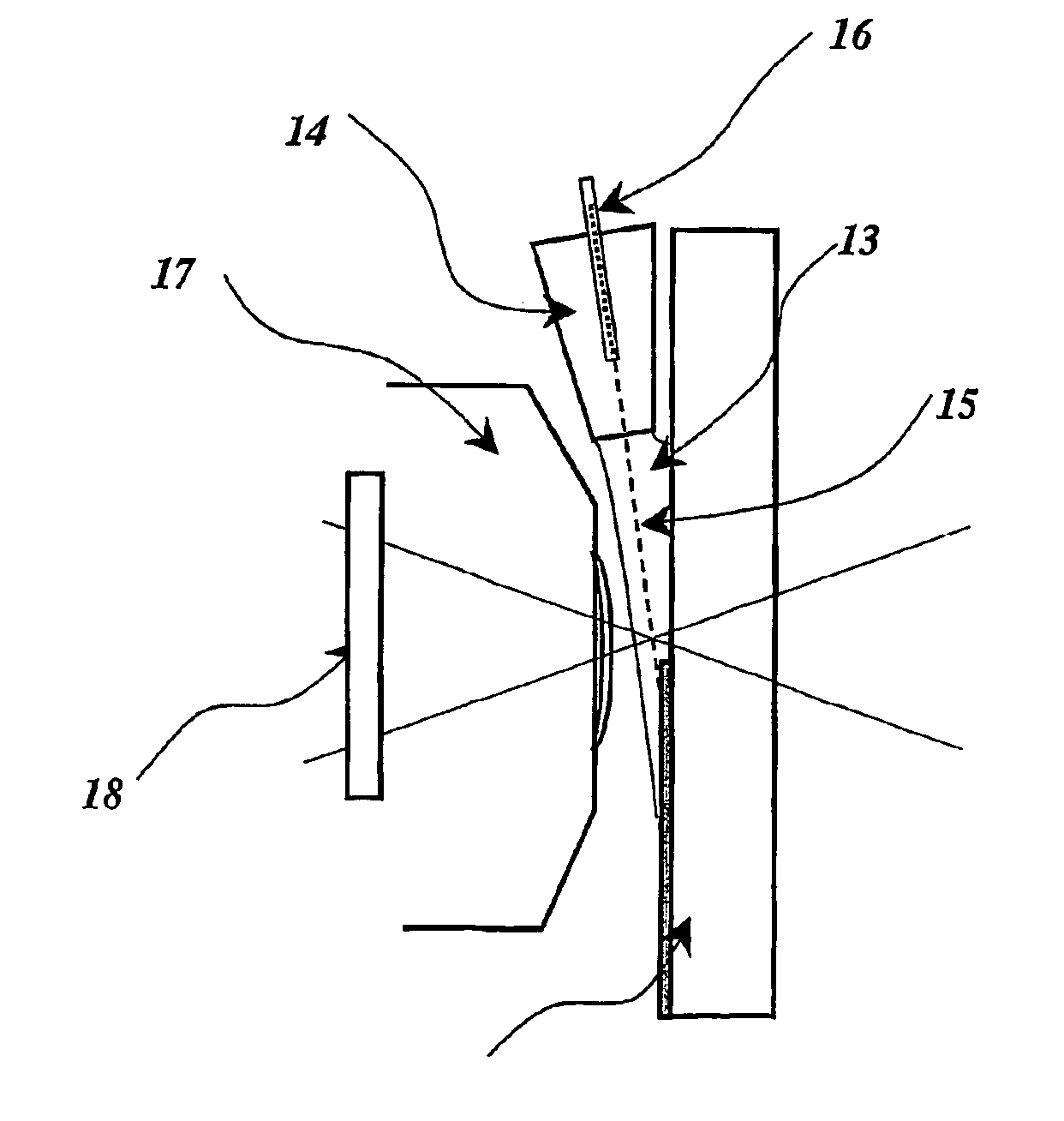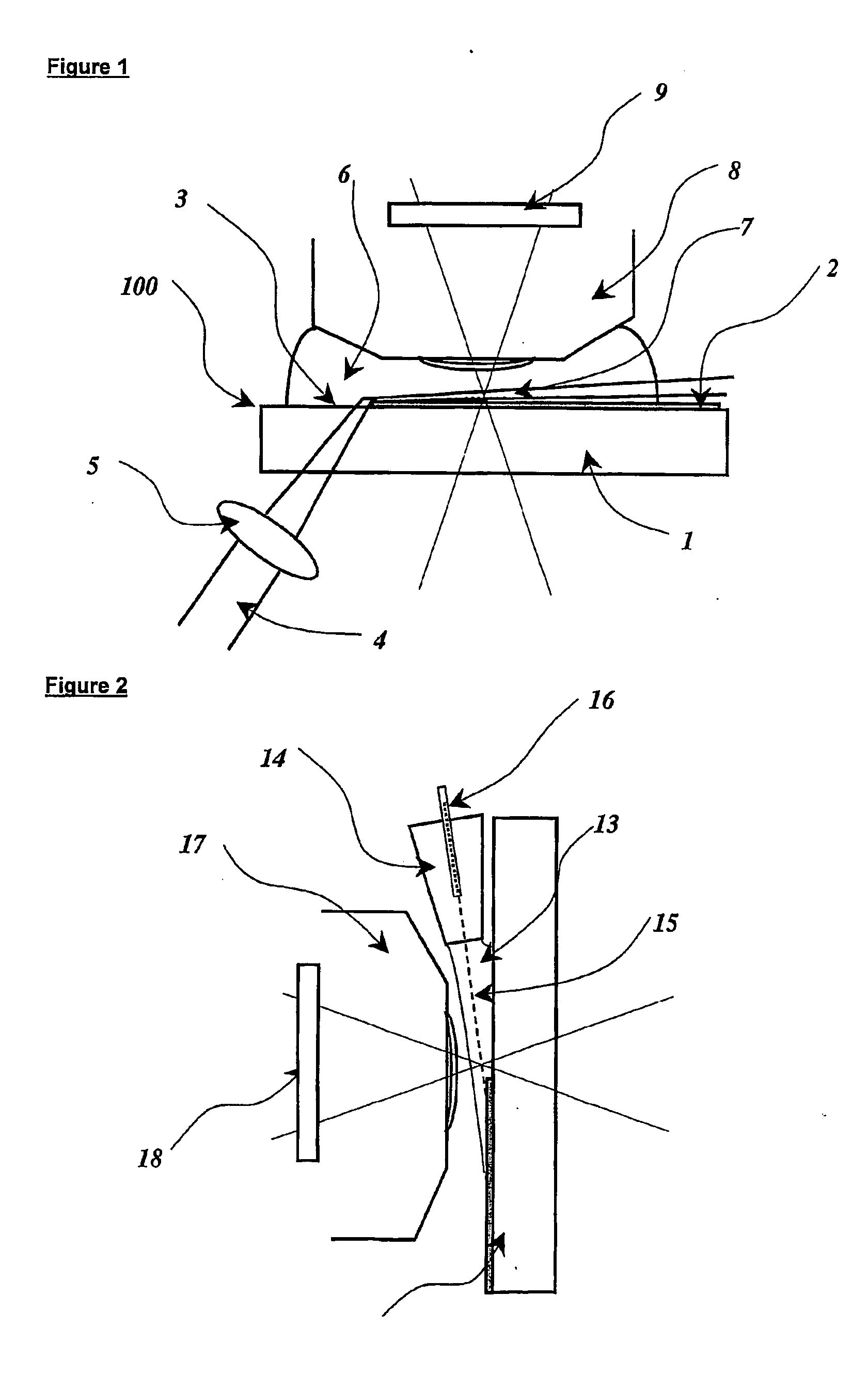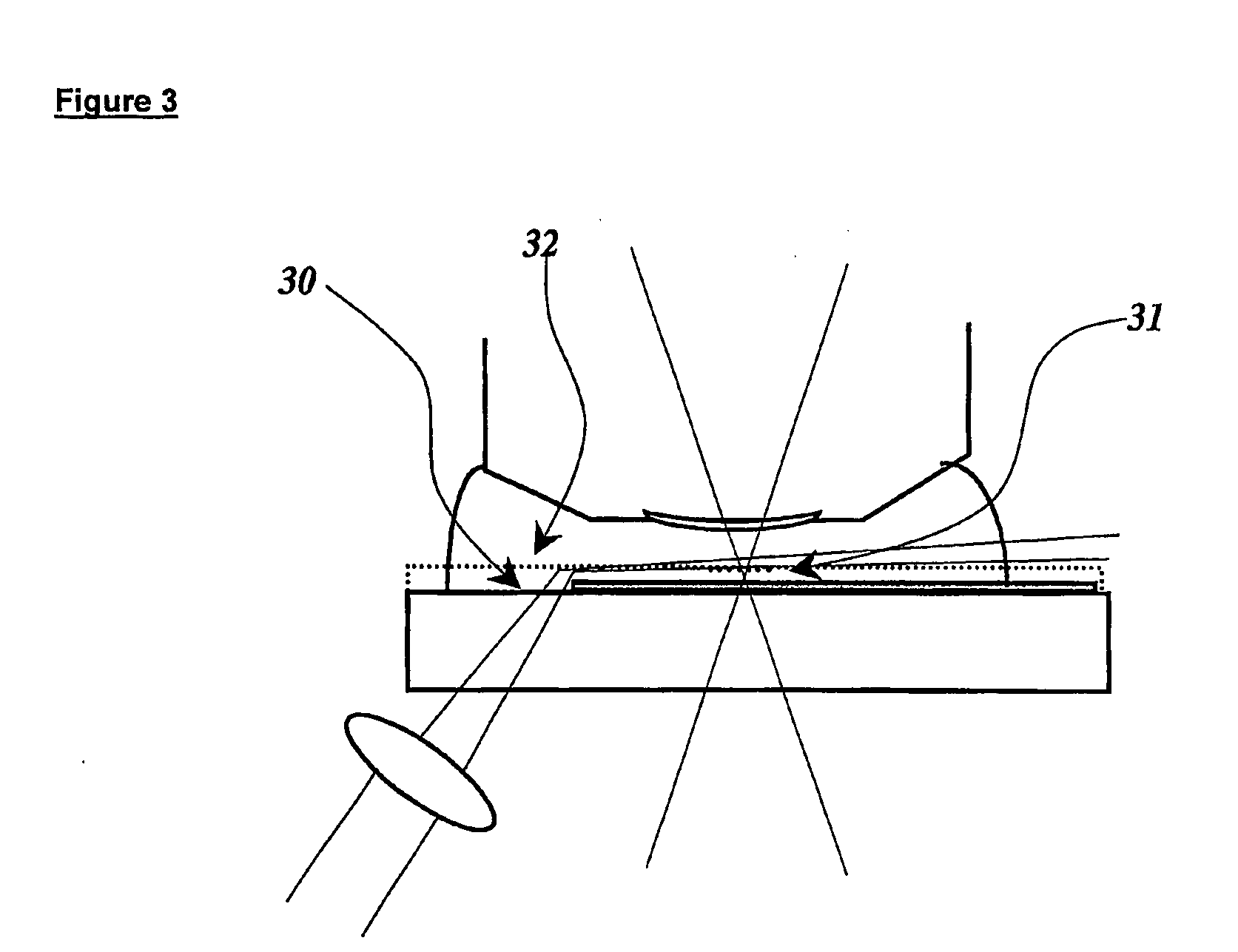Optical detection and analysis of particles
a particle and optical detection technology, applied in the field of optical detection and analysis, can solve the problems of limited monitoring ability, insufficient amount of energy coupled through the metal from the incident illuminating beam to the evanescent surface plasmon field, and the limited ability of the bacterial cell to be visualised by this technique, etc., to achieve the effect of enhancing performan
- Summary
- Abstract
- Description
- Claims
- Application Information
AI Technical Summary
Benefits of technology
Problems solved by technology
Method used
Image
Examples
Embodiment Construction
[0051] Referring to FIG. 1, apparatus in accordance with the invention comprises an instrument element 100 having an optically transparent substrate 1, typically a glass or silica prism or flat, onto part of which is deposited a thin film of metal 2, typically 30-80 nm depth of e.g. gold, silver, aluminium or chrome deposited by any suitable sputtering, vapour phase, electrochemical or other deposition means. The optical substrate is only partially covered by the metal film 2, a portion 3 of the surface being left uncoated. A light beam of suitable collimation, intensity, polarisation and wavelength or wavelength range 4 is focused by lens 5 to be incident on the optical element such that the beam strikes the surface of the optical element in the region 3 which is not covered by the metal film 2 but which is adjacent to the metallised region at an angle at which, when a sample of liquid 6 containing a suspension of particles 7 is placed onto the surface of the optical element 100, t...
PUM
| Property | Measurement | Unit |
|---|---|---|
| diameter | aaaaa | aaaaa |
| size | aaaaa | aaaaa |
| transparent | aaaaa | aaaaa |
Abstract
Description
Claims
Application Information
 Login to View More
Login to View More - R&D
- Intellectual Property
- Life Sciences
- Materials
- Tech Scout
- Unparalleled Data Quality
- Higher Quality Content
- 60% Fewer Hallucinations
Browse by: Latest US Patents, China's latest patents, Technical Efficacy Thesaurus, Application Domain, Technology Topic, Popular Technical Reports.
© 2025 PatSnap. All rights reserved.Legal|Privacy policy|Modern Slavery Act Transparency Statement|Sitemap|About US| Contact US: help@patsnap.com



